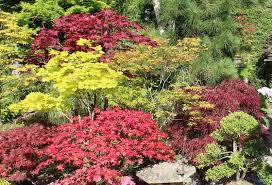
The Japanese Maple is probably one of the most favored trees to include in landscaping. One of its most endearing features it that it grows somewhat slowly and tends to keep a a nice compact shape that won’t demand constant pruning. But the biggest reason people love a Japanese Maple is because of its multiple colors and vibrant displays during various seasons. Add to the color interest a variety of leaf shapes, and is anyone surprised by their popularity. But most important, there is a Japanese Maple with size that is suitable to fit any yard or lack of yard. Let us help you find that perfect maple. Whether you’re putting one in a pot, in a courtyard, on a deck, as an accent in a bed or to help shade a window, we’ve got one that will serve your color, shape and size requirements.
There are dwarf varieties that will remain under 4′ even after growing for more than 10 years. There are varieties that seem to hover between that 10 to 12′ mark. And there are varieties that grow between 15 to 20′ tall.
Inaba-shidare is a mounding tree that grows to about 5′. It’s branches cascade and produce delicate leaves that run from a lovely shade of purple to a deep scarlet in the fall. It loves full sun and would work well in a container.
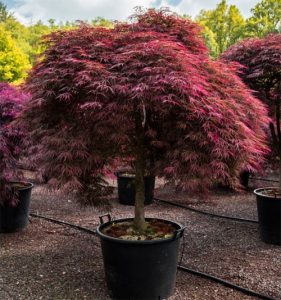

Sango-Kaku is known for it’s distinctive bark which is a lovely coral color. It’s a large variety of Japanese Maple, reaching a height of about 20 feet, with light green leaves that turn yellow and pink during the fall. With it’s coral bark, it creates a lovely contrast to other leafless trees during the winter.


Mikawa Yatsubusa has chartreuse green leaves that will turn to a bright red in the fall. It’s the perfect tree for a pot placed on your porch. It’s known for its interesting layering leaf and branch structure.
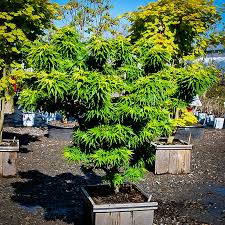
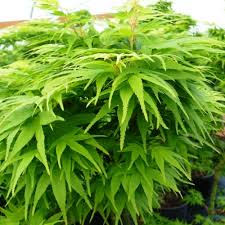
Emperor I is an upright grower that will reach around 15′. It has the favored deep maroon foliage that will hold that lovely color even during the summer months. In the fall, it turns a lovely scarlet.
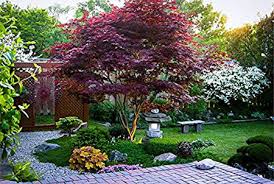

Orange Dream is another upright grower that will reach that 15′ height, but it has a totally different color than the Emperor I. The leaves begin as yellow with orange edges but by fall, the color changes to orange and red.
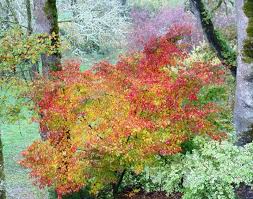
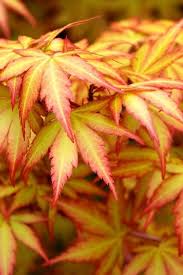
These are just a few of our favorites. One of them is surely deserving of a spot in your landscape.
